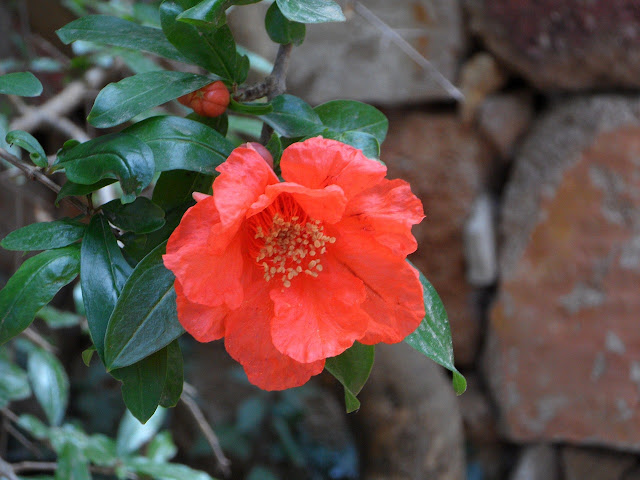OUPA NOLLIE EN OUMA BETTIE SE EPIESE REIS : TSHIPISE TOT MBEYA IN NORTHERN RHOSESIA
DAG EEN: Maandag 8 September 1958 Witpoort tot by Tshipise warmwaterbron
In ouma Bettie se eie woorde direk uit haar dagboek -
Maandag aand gekom tot by Tsipise. Ons het baie voorspoedig gery.
DAG TWEE: Dinsdag 9 September 1958 SUID RHODESIA
Dinsdagaand het ons gekom tot by Motel Pennywhistles. Ons het toe van Tshipise af gekom en het toe
by die Zimbabwe bouvalle gewees. Dit was waarlik
die moeite werd gewees om te sien. Dit
is waarlik iets wonderliks om te sien en die groot geheim wat daar agter
sit. Hoe alles so gekom het en wat van
daardie mense geword het, waar dat daar niemand van hulle oor gebly het, dat
die wereld niks van hulle geskiedenis weet nie, dit is wonderlik.
The journey From Tshipise, South Africa to
the Great Zimbabwe Ruins (near Masvingo, Zimbabwe), is approximately
500-600 kilometers (around 300-370 miles) and involves crossing the border into
Zimbabwe.
Great Zimbabwe was a city in the south-eastern hills of
the modern country of Zimbabwe,
near Masvingo. It was settled from around 1000 AD, and
served as the capital of the Kingdom of Great Zimbabwe from
the 13th century. It is the largest stone structure in precolonial Southern
Africa. Major construction on the city began in the 11th century
until the 15th century, and it was abandoned in the 16th or 17th century.[1][2][3] The
edifices were erected by ancestors of the Shona
people, currently located in Zimbabwe and nearby countries.[4] The
stone city spans an area of 7.22 square kilometres (2.79 sq mi) and
could have housed up to 18,000 people at its peak, giving it a population
density of approximately 2,500 inhabitants per square kilometre
(6,500/sq mi). The Zimbabwe state centred
on it likely covered 50,000 km² (19,000 sq mi).[3] It
is recognised as a World Heritage Site by UNESCO.
DAG DRIE: Woensdagaand 10 de September.
Ons was toe vanmore oor Salisbury, en toe na Bertie hulle se plek, en
daarvandaan toe gekom en toe na die Kariebadam toe. Daar is n vreeslike
werkery. Hulle meen die dam gaan as dit
klaar is 45 miljoen kos. Die grootste
dam glo wat daar is. Vanaand om 8 uur het ons by Lusaka gekom en slaap in die
Hotel. Ons moet 2 pond 8 shilings betaal
vir slaap en eet.
DAG VIER : Donderdag 11 September 1958 Suid
Rhodesia
Ons het lekker geslaap – ons eet eers 7 uur in die hotel dan
ry ons verder. Ons het gister oor die
Zambesi rivier gekom, ons is toe deur Suid Rhodesia oor die Zambesi.
 |
| Die Zambesi rivier |
Nou is ons in Noord
Rhodesia. Ons is ook oor Kafue rivier
oor n groot brug.
 |
| Kafue rivier |
 |
| Brug oor die Kafue rivier |
Dit is ook n baie
groot rivier. Dit is dan bosveld en
wissel so af dan berge wereld.
DAG VYF: Vrydag 12 September 1959
Ons is toe oor Broken Hill, n groot dorp.
"Broken Hill" was the former name for the
town of Kabwe, located in present-day Zambia, which was part of Northern
Rhodesia during the colonial period. The town's name was changed from
Broken Hill back to its original name, Kabwe, in 1967. The area became an
important mining center, famous for the discovery of the "Broken Hill
Man" (now known as the Kabwe skull) in 1921 at the Broken Hill mine.
en toe oor Kapuvieposh daarvandaan deur die lang vlaktes bosveld en vanaand slaap ons op Mpeka by n hotel.
Dit is net die hotel hier en petrol pompe. Dit is waar dominee hulle se kar gebreek het
en waar Alfred so siek was toe hy n klein seuntjie was.
DAG SES: 13 September 1958 Tanganyika
Vanaand is ons op Mbeya.
"Mbiya" is not the
name of a region or a well-known location within Northern
Rhodesia. Instead, "Mbiya" is likely a misspelling of
"Mweru", referring to Lake Mweru, a large lake on the border between what
was Northern Rhodesia (now Zambia) and the Democratic Republic of the Congo. Northern Rhodesia was a British
protectorate that became Zambia, and Lake Mweru is a significant geographical
feature in that area.













Comments
Post a Comment
COMMENTS